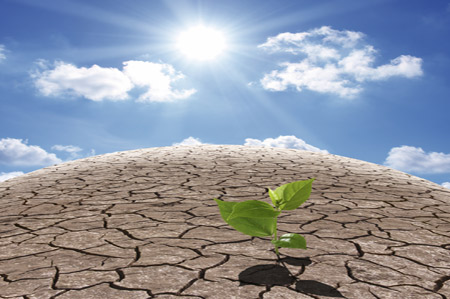Dust-Bowl Drought Seen Ending as Rain Aids U.S. Midwest Planting
Category: Miscellaneous
 (Businessweek) – Rain through May will improve U.S. corn-crop conditions for much of the Midwest, the main growing region, as fields recover from last year’s drought, according to AccuWeather Inc.
(Businessweek) – Rain through May will improve U.S. corn-crop conditions for much of the Midwest, the main growing region, as fields recover from last year’s drought, according to AccuWeather Inc.
Above-normal snowfall from northwest Texas to northeast Wisconsin combined with above-average rainfall from December to March east of the Mississippi River eased the drought and improved conditions for spring planting, State College, Pennsylvania-based AccuWeather said in a statement. Above-normal temperatures and dry weather will expand the drought from the western Great Plains to California through August.
“The weather pattern is more favorable than last year, when warm, dry weather from March to August wilted crops,” Paul Pastelok, an AccuWeather senior meteorologist, said in a telephone interview. “We expect ample moisture during most of the growing season from southern Texas to New York.”
The worst U.S. drought since the Dust Bowl era of the 1930s cut corn production last year by the most in 17 years and sent soybean output to a four-year low. Prices surged to records as supplies tightened. The U.S., the world’s biggest grower of both crops, will produce record crops in 2013 as teh weather returns to normal, the government said last month.
From Alabama to North Carolina, rain during the past three months has eliminated drought conditions that started last summer, and the region will continue to have normal rain during the growing season, AccuWeather said in its report.
Heat Risk
There will be at least a couple of hot, dry periods that provide temporary risks of crop damage during June and July in parts of the Midwest, Pastelok said. The biggest threat for corn and soybeans, the two biggest U.S. crops, will be centered in Nebraska, where 100 percent of the state remains in severe to extreme drought. Parts of Kansas, Colorado, South Dakota, and western regions of Iowa and Minnesota also may have periods of dry weather, he said.
Warmer Gulf of Mexico water temperatures, a fading La Nina weather event, and a more active upper-atmosphere jet stream will help to trigger more frequent rain and prevent sustained periods of heat and dryness, unlike last year, he said.
The lack of snow in the Sierra Nevada mountain range may increase water-resource limitations in California, AccuWeather said in a long-range forecast today.
“The biggest threat from dry weather this year may be lack of irrigation for the fruit and vegetable crops in California,”Pastelok said.




